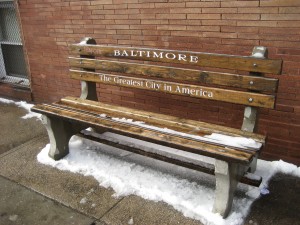
Baltimore has a hard-core drug problem. The evidence is unmistakable. Head down an alley in the wrong part of town and you’re liable to find a discarded needle, some broken vials, and maybe even a shell casing or two. Why, yes. That was a gunshot. See that guy on the corner? No, he’s not tired. He’s high. Really, really high.
My fascination with Baltimore’s heroin addiction began in 2006. I can’t say what drew me to the seedy side of the city, but I quickly became obsessed. I took photograph after photograph of shuttered row houses. I donned a bulletproof vest and cruised West Baltimore with the cops. I sat in the needle exchange van and handed out clean syringes. I watched The Wire. I dropped the F-bomb with alarming frequency. I used pushpins to painstakingly mark the location of every murder on a map taped to my dining room wall. Truth be told, I went a little nuts. I thought getting close to the drug problem might help me make sense of it.
David Epstein at the National Institute on Drug Abuse (NIDA) has come up with a far better way of understanding the epidemic.
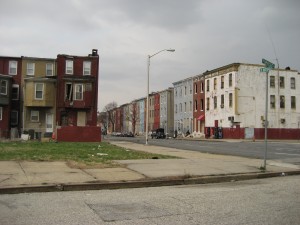
He and his colleagues are giving drug addicts GPS devices and PDAs. The GPS units allow the researchers to track the drug users’ whereabouts. The PDAs enable the addicts to keep an electronic diary of their drug use. Four times a day the devices beep and ask the drug users to answer a series of questions. Who are you with? What are you doing? How do you feel? The drug users are also trained to enter information each time they crave drugs or use them. This information combined with mapping tools may help Epstein and his colleagues gain a better understanding of the factors that fuel drug use and how best to fight them. Genes likely play a role in addiction. But Epstein points out that people living in poverty may be more influenced by their environment. “That statement probably sounds obvious, but it’s rarely said, and we could use a lot more data to back it up,” Epstein said in a recent article.
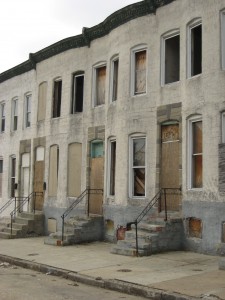
The study is far from over. Epstein and his colleagues hope to recruit 150 drug users to participate. So far, they have enrolled just 45. Epstein presented preliminary results last year at the annual meeting of the Association of American Geographers. Sadly, I wasn’t there. But Laura Sanders of Science News attended. I love the way she described their results: “Squiggly lines traced the man’s path as he wended around the city and out into the surrounding suburbs. Black dots pinpointed the places along the way where the man had used drugs. … For the most part, the man spent most of his time in relatively nice neighborhoods, such as the Inner Harbor. But the places riddled with black dots — where he used drugs — were by and large the worst parts of town.”
How do the researchers know which parts of town are bad and which are good? Debra Holden, a brilliant researcher at Johns Hopkins, categorized neighborhoods based on the physical characteristics that could be quantified — number of boarded up houses, broken windows, shell casings, street memorials for recent killings, and obviously intoxicated adults, among others. The maps are works of art. In fact, given my obsession, I’m thinking about having them framed for my office.
**
Image credits
Photos of blighted Baltimore: Cassandra Willyard
Drug and violence maps of Baltimore: Data collection by Dr. Debra Furr-Holden and the DIVE Studies Lab, Johns Hopkins Bloomberg School of Public Health. Mapping by Ian M. Craig, NIDA IRP Treatment Section, NIH.
Race map: Ian M. Craig, NIDA IRP Treatment Section, NIH.
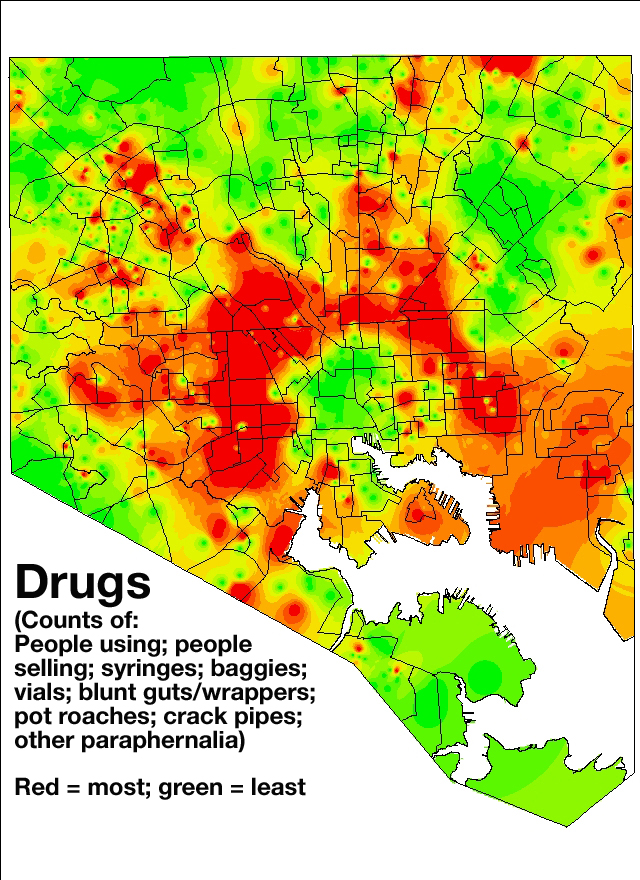
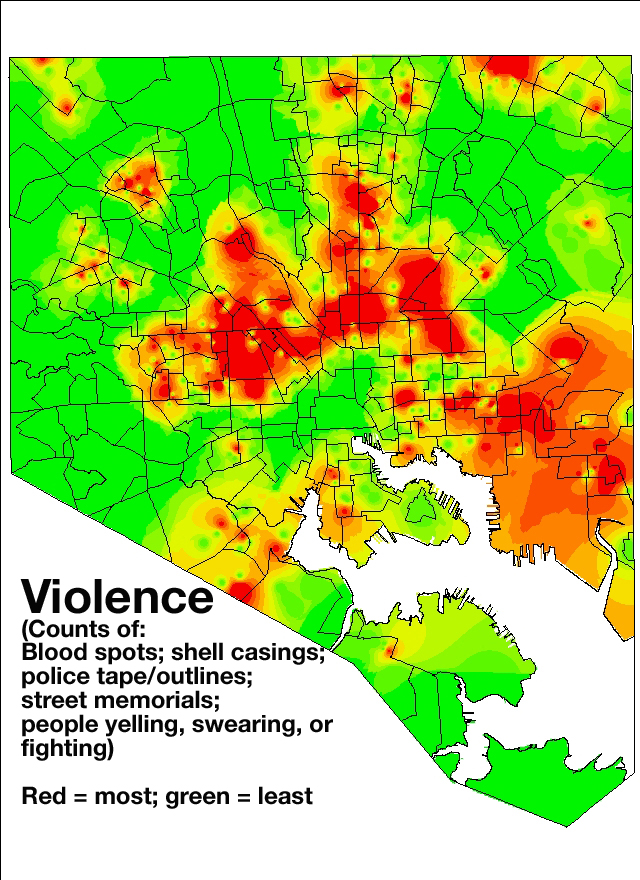
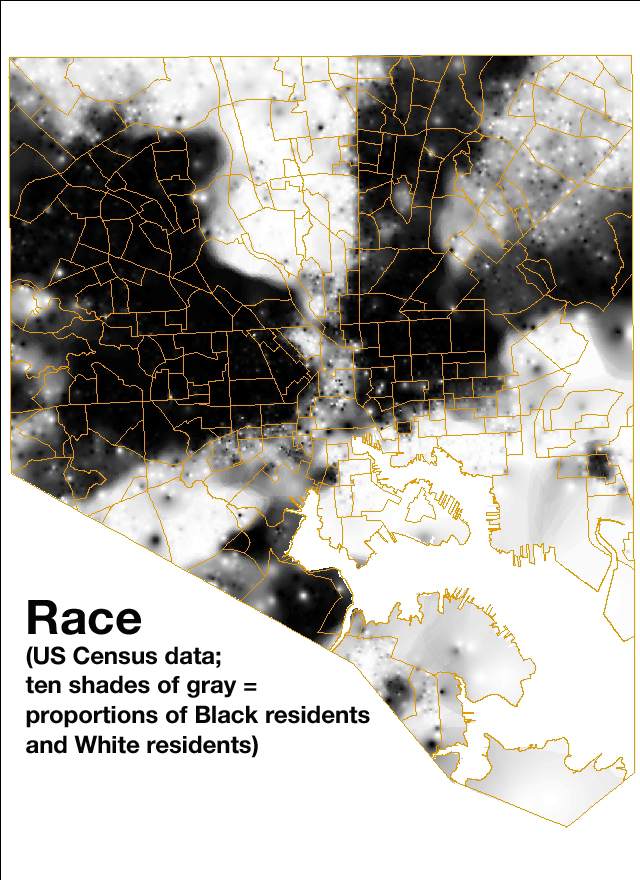
Oh Cassie, now I’m sad.
Ann in Baltimore
I can so relate to your 2006 self. I spent a couple of obsessive years preaching harm reduction and decriminalization, learning about the Vancouver Drug User’s Union, assisting research at the Centre for Addiction and Mental Health in Toronto. All the while bartending at a sketchy after-hours club. I love the map on the bottom, with its intuitive colour coding.
Amazing research. Baltimore is such a fascinating city. I do wonder how the researchers convince the drug users to carry the equipment and use it correctly.
Ann, don’t be sad.
Jessa, I love the last map too. I love being able to actually see the funnel that is white Baltimore.
Molly, I wondered about that too. Wouldn’t addicts just sell the PDAs? With respect to the GPS tracking, Epstein says that they emphasized that the GPS data weren’t being used to keep an eye on participants, just to try to understand the association between neighborhoods and behavior. And all the data the researchers collect are protected from subpoena.
That park bench used to say “The City that Reads.”
And I miss it too.
Just because a person is an “addict,” doesn’t mean they are stupid, or don’t know how to use technology. Not all addicts are homeless, or will pawn anything that’s is worth value. Now, some do, but the word addict doesn’t mean that.
Im sure the gps’s have a serial number, or id just in case, but still…
I am a addict. I use heroin & I’m only 20 years old. I’ve been to west baltimore many times, to pickup my supply. Hell, I’ve chilled with my dealer, went fishing with him, too… Currently, I’m trying to recover. But even at the depths of my addiction, I owned a $2000 macbook pro & $500 dslr camera. Just making the point, that not all addicts, will do anything for the next fix…
Alot of us, are smart people, we just fall into an addiction. Just like smoking, or drinking…